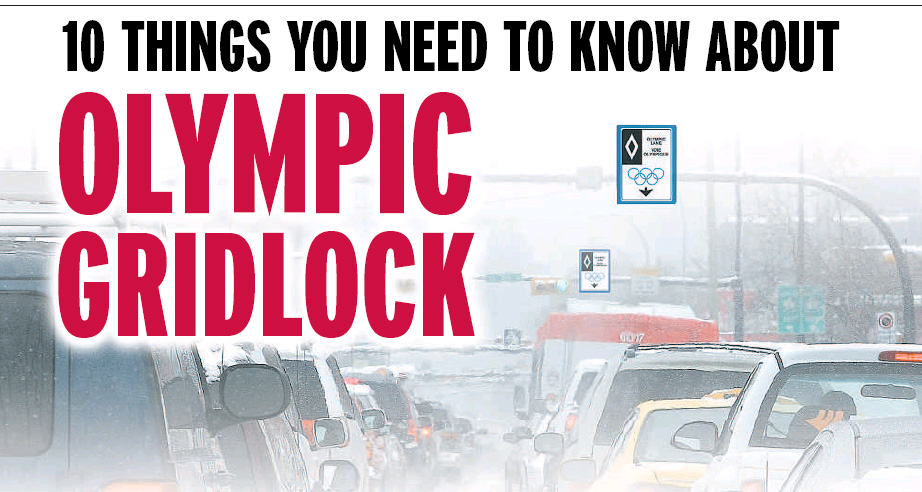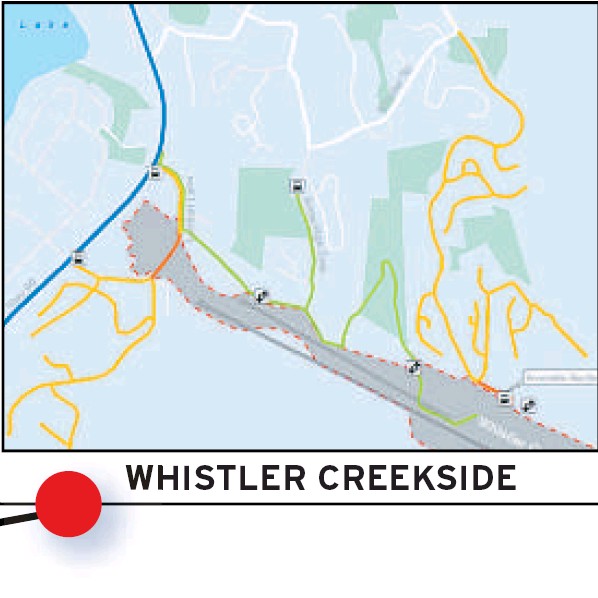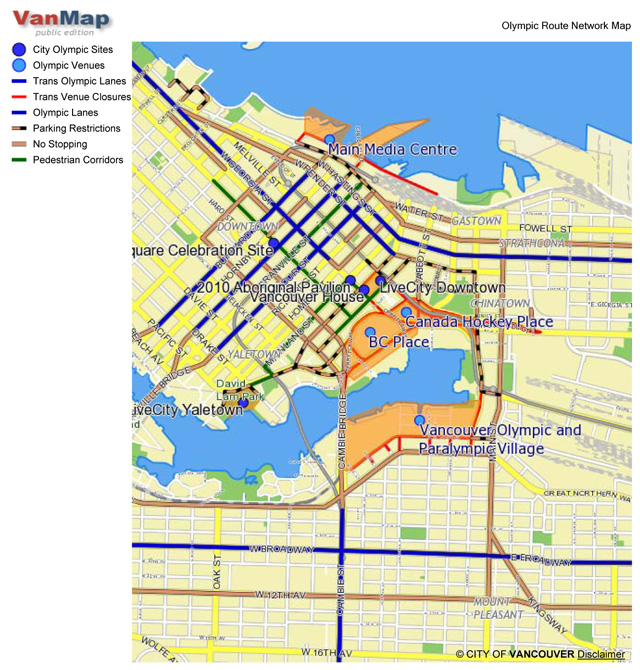Closures make getting around difficult
Damian Inwood
Province





SkyTrain and other transit services in Metro Vancouver and Whistler will operate on extended hours during the Games. Photograph by: Arlen Redekop, The Province

Hamilton Street in Vancouver’s Yaletown will be turned into a pedestrian corridor during the Games. RIC ERNIST FILE — THE PROVINCE


1. In Metro Vancouver the best bet is to leave your car at home. Rush hour will become crush hour and will start earlier and end later during the Games. Olympic organizers recommend taking transit, car-pooling, using bicycles or walking in order to reduce traffic by 30 per cent or 26,000 vehicles. Travellers are encouraged to travel into downtown Vancouver before 7 a.m. Or after 9 a.m. and leave before 2 p.m. Or after 7 p.m. Information can be found on www.travelsmart2010.ca
2. A vehicle checkpoint on the Sea-to-Sky Highway at Alice Lake runs northbound from Feb. 11 to 28 in peak hours. Permits are needed to travel north of Squamish between 6 a.m. and 6 p.m. Two permits will be issued per residence and permits are transferable. They’ll be needed by property owners and guests, renters and guests, hotel guests, employers and employees, commercial vehicles and through traffic. People travelling outside peak hours don’t need a permit, nor do southbound vehicles. Permit offices will open next month in Vancouver, Squamish, Whistler and Pemberton.
3. The Georgia and Dunsmuir Viaducts close Feb. 5, a week before the Games start. First road closure is on Nov. 1 on a new road at 1st Avenue, cutting through the Olympic Village. Other phased- in road closures start on Jan. 1. Roads around the main media centre at Canada Place start closing on Jan. 27 to allow an estimated 13,000 media to get in and out on buses. Expo and Pacific Boulevards will close Jan. 29.
4. Olympic-only lanes start Feb. 4 and run to March 1. For example, restricted lanes will be in place in both directions on curb lanes along Hastings Street from downtown to the PNE.
Only accredited vehicles, transit buses and emergency vehicles will be allowed to use them. Major downtown parking and no-stopping restrictions come in on Feb. 4 and run until March 1.
5. Bus hubs will be set up in Vancouver, Burna-by and on the North
Shore to get spectators to the mountain venues.
Buses will cost $25 return to Whistler and $12 return to Cypress Mountain.
Trips can be booked online starting Nov. 24. People going to Whistler Olympic Park and the Whistler Sliding Centre will bus from BCIT’s Burnaby campus and Lonsdale Quay, while spectators going to watch the downhill at Whistler Creekside will leave from Langara College.
Cypress Mountain spectators going to watch snowboarding or aerials will leave from Simon Fraser University’s Burnaby campus, Capilano University or Lonsdale Quay.
6. Get ready to lose some sleep as deliveries will be allowed 24 hours a day in downtown Vancouver, with the preferred times between midnight and 6 a.m. In Whistler Village, deliveries must be made between 10 p.m. and 6 a.m. Temporary truck routes are planned downtown on Hastings, Nelson and Smithe streets.
7. A pedestrian corridor along Hamilton Street, linking the city’s two live sites at David Lam Park and at Georgia and Cambie, will be in place between noon and midnight starting on Feb. 12 and running until Feb 28. Cross-streets will be open and bicycles and pedicabs will be allowed.
8. Plan extra time for any journeys. Transit officials predict lineups at bus, SkyTrain, SeaBus and WestCoast Express stops and terminals. Olympic officials say it’s common to sit inside an Olympic event for three hours before it starts.
9. Downtown Vancouver is not considered a “red zone” and businesses and homes are accessible during the Games. For example, the Costco next to GM Place will be open for business.
10. Extra transit and longer operating hours are geared to make buses, SkyTrain, SeaBus and Westcoast Express a viable alternative.
Millennium and Expo Lines will run from 5:15 a.m. to 1:15 a.m., while the new Canada Line will run from 4:50 a.m. to 2:15 a.m.
The NightBus service will be extended to run around the clock and the last regular bus will leave downtown Vancouver at 3 a.m.
The B.C. transit fleet in the Sea-to-Sky corridor will triple from 39 to 135 buses.
© Copyright (c) The Province

